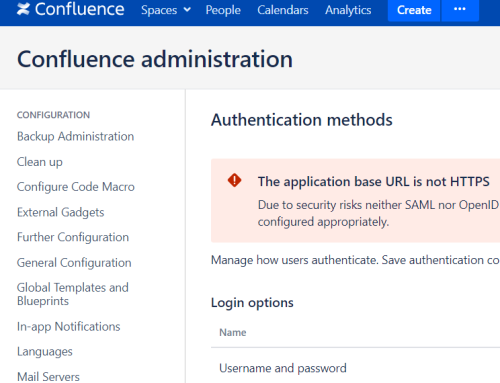Affected Software: IPConfigure Orchid Core VMS (All versions < 2.0.6, tested on Linux and Windows)
Vulnerability: Unauthenticated Privileged Directory Traversal
CVE: CVE-2018-10956
Impact: Arbitrary File Read Access
Metasploit module:
https://github.com/nettitude/metasploit-modules/blob/master/orchid_core_vms_directory_traversal.rb
Summary of Vulnerability
IPConfigure Orchid Core VMS is a Video Management System that is vulnerable to a directory traversal attack, which allows underlying database access, access to camera feeds and more. This allows a remote, unauthenticated attacker to send crafted GET requests to the application, which results in the ability to read arbitrary files outside of the applications web directory. This issue is further compounded as the Linux version of Orchid Core VMS application is running in context of a user in the “sudoers” group. As such, any file on the underlying system, for which the location is known, can be read.
Nettitude has performed limited testing on the Windows version of Orchid Core VMS, and has been able to read files such as ‘C:/Windows/debug/NetSetup.log’ and ‘C:/WINDOWS/System32/drivers/etc/hosts’. Reading these files does not require permissions greater than a regular user account, however, it is possible that the Orchid Core VMS web server is running in a privileged context.
Below is an image for the login page of Orchid Core VMS.

Metasploit Module
We have created a Metasploit module for this vulnerability, which can be found here:
Vulnerability Analysis and Impact
Discovery of the vulnerability involved multiple steps, such as identifying the correct URL encoding that is accepted by the application, as well as the location of files on the underlying system, the latter of which was conducted through manual and automated fuzzing techniques.
The following images will help explain the discovery and exploitation of this vulnerability. This is the first GET request that was sent through a browser.
Request: https://ip/../../../../../../../etc/shadow

The response is interesting as the error suggests that it may be possible to read resources on the underlying web server. In this request it appears that the dot-dot-slash (../) was removed by the application. As such, in the second request, the dot-dot-slash was URL encoded and once again submitted through the browser.
Request: https://ip/%2e%2e%2f%2e%2e%2f%2e%2e%2f%2e%2e%2f%2e%2e%2f%2e%2e/etc/shadow

In this request, the URL encoding for the forward slash (%2e) was removed. Nettitude submitted a third request, the browser was bypassed and the same request was sent to the web server using curl.
The following image demonstrates the ability to read the ‘/etc/shadow’ file on a Linux file system. This is of particular concern as it displays that the Orchid web service is running with high user privileges. With this level of access an attacker is in the position to read certain files of interest. This includes SSH private keys, VPN configuration files and all other files on the underlying system.

The following image demonstrates the ability to read the ‘C:\Windows\debug\NetSetup.log’ file on a Windows file system. This demonstrates that the vulnerability is not limited to the Linux file system and affects both Windows and Linux operating systems.

Furthermore, Nettitude was able to identify the applications structure and database location using readily available developer documentation and the online knowledge base for Orchid Core VMS (https://support.ipconfigure.com/hc/en-us/categories/200146489-Orchid-Core-VMS).
Orchid Core VMS uses a SQLite database, which is intended to be treated as a file on modern operating systems. Nettitude was able to download this database using the previously described directory traversal vulnerability. The image below represents the users which have access to the application, along with their SHA1 16-byte salted password hashes. Upon successfully cracking password hashes and obtaining the cleartext password for a user account, an attacker is placed in the position to view live-camera streams, manage user accounts and perform other application functions which are otherwise restricted to authenticated users.
Perusing through the database, Nettitude also discovered valid session ID’s for the web application and connected-camera descriptions.

Proof of Concept for Linux
curl --insecure https://IP/%2e%2e%2f%2e%2e%2f%2e%2e%2f%2e%2e%2f%2e%2e%2f%2e%2e/etc/shadow
Proof of Concept for Windows
curl http://IP:PORT/%2e%2e%2f%2e%2e%2f%2e%2e%2f%2e%2e%2f%2e%2e%2f%2e%2e/Windows/debug/NetSetup.log
Disclosure Timeline
- 20 April 2018: Discovered directory traversal vulnerability in Orchid VMS 2.0 on Ubuntu 14.04 LTS.
- 7 May 2018: Confirmation of vulnerability on other Linux OS and Windows OS across all Orchid VMS versions.
- 7 May 2018: Initial write up of vulnerability.
- 7 May 2018: Initial reach out to IPConfigure. Submitted request for contact details for an information security employee.
- 8 May 2018: Verified that the correct contact has been reached.
- 9 May 2018: Requested CVE reservation from Mitre.
- 9 May 2018: Received CVE-2018-10956 from Mitre.
- 9 May 2018: Sent PGP encrypted vulnerability write up to contact at IPConfigure.
- 11 May 2018: Received confirmation of vulnerability from IPConfigure.
- 11 May 2018: IPConfigure releases v2.0.6 for public download, resolving the identified vulnerability.
- 20 June 2018: Nettitude publicly disclosed the vulnerability




